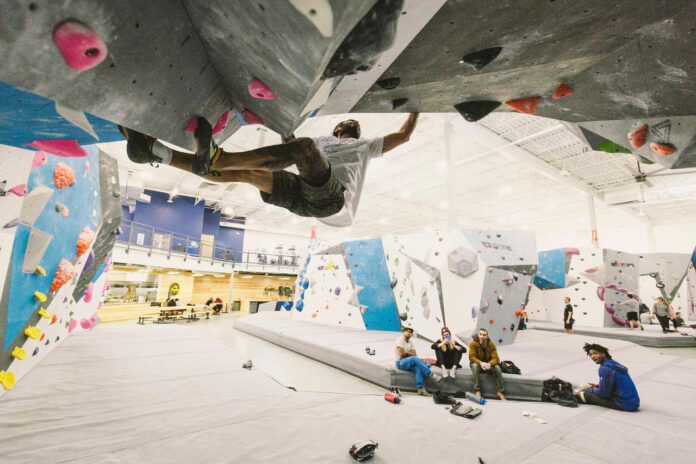No matter the grade, harder climbs can certainly leave an impression. As climbers, these climbs can be simultaneously enthralling, frustrating, motivating, elating, and everything in between. As setters, the task of regularly coming up with new harder climbs can sometimes feel more daunting than inspiring. But there’s a method to the madness that’s simpler than one might think. Louie Anderson helps break it all down in this Ask a Setter.
Got a routesetting question you’d like answered? See if we’ve covered it already in a past Ask a Setter, and then email us your question here.
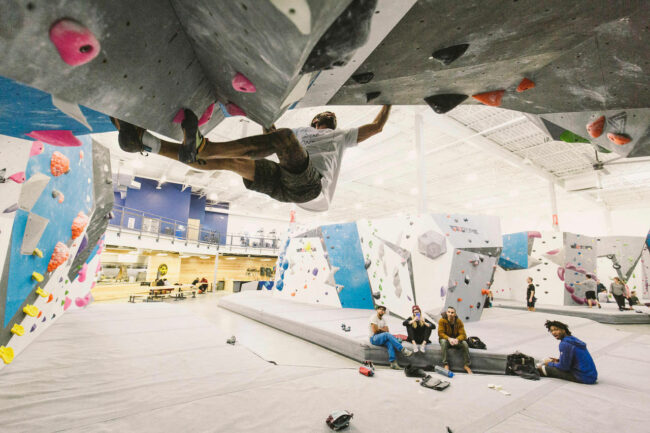
QUESTION: You’ve talked before about tricks for keeping easier climbs interesting and not just jug ladders. On the flip side, what are some tricks for setting harder climbs?
ANDERSON: Setting harder climbs isn’t as challenging as it sounds, really. As with any setting skill, practice makes perfect, and it helps to break it down into its parts. When setting harder climbs, we just need to look at the different ways of approaching our propositions to the climbing community. There are several areas that we can focus on (and modify) that will have a direct impact on the overall difficulty of the climbs we set.
Movement Complexity
In easier climbing, basic movement is usually very intuitive and natural. One way to engage the climber more and to challenge them in a more difficult manner is to break away from the obvious norms of climbing movement. Consider utilizing more directional hold placements that require the climber’s body to rotate and engage with the holds in a more complex manner. Sometimes introducing bumps, cross-overs, rose moves, gastons, underclings and toe/heel hooks can be enough to radically change the way in which a body will move through a given set of holds or sequences within your climb.
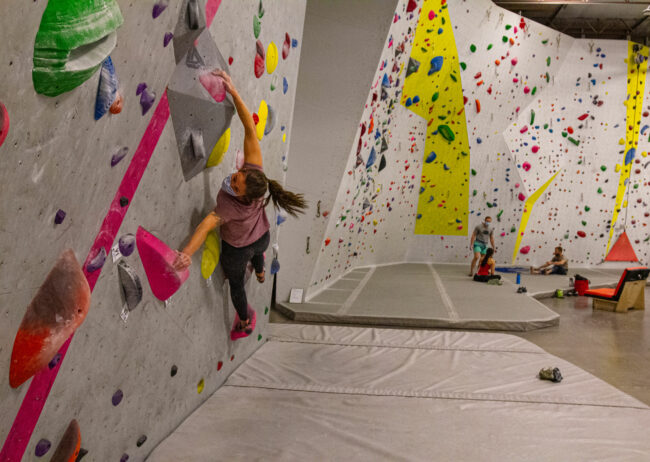
Oftentimes the opposition required to use handholds is found in the relationship between the foot and handholds themselves, where the feet are driving the body into the handhold and providing a stable feeling of support through the skeletal and muscular system. Feel free to experiment with where that needed opposition comes from. Perhaps introducing more of a compression sequence (compressing with either the hands, the feet, or both), or expansion sequence (think stemming or opposing gastons) will provide a different challenge and engage different muscle groups, resulting in a different type of fatigue, pump, or general physical challenge than what a given climber might be used to or expect to encounter.
Hold Orientation
Every movement has an optimum hold orientation for comfort, ergonomics, and ease of use. Consider rotating the holds slightly away from this optimum orientation. Sometimes even just a few degrees of rotation will drastically change not only how the hold is grasped and utilized, but will also force a climber into a different body position to allow for adequate use of the hold. Rotating the hold clockwise or counterclockwise can also require the climber to find a different way to obtain the necessary opposition to engage and use a hold positively. The more the hold is rotated, the more pronounced these effects will be.
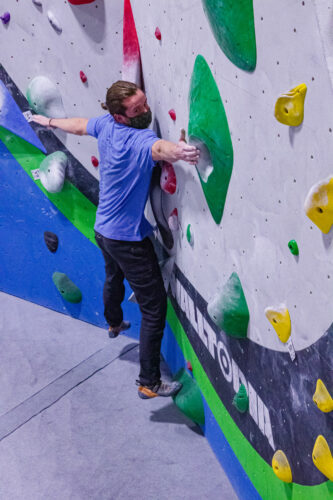
Relationship Between Foot and Handhold Placement
On less challenging climbs, the footholds are often situated in exactly the best spot and orientation to support the proposed move. By moving the position of the holds higher and closer to the body, you can often force the climber into a slightly more dynamic approach to the move at hand. Conversely, by keeping the footholds further to the side, or possibly a little lower than optimum, you can introduce a more static and core-intensive approach to the same move. Be careful though with this latter approach as you will often walk a fine line between your intended effect and introducing some height dependency into your move.
Another approach for affecting the difficulty of a move or sequence with footholds is to orient them in a way that requires the climber to push a little more into them (instead of just standing on them) or to wrap and pull with their toes to engage with them. These changes can be achieved with small rotations of the footholds, even if they are still in the optimum placement in relation to the handholds and the body’s position on the climb.
Foothold Size and Security
An obvious other option when looking at footholds as the tool to increase difficulty is to make them lower-profile or less positive overall. A shallower foothold (even if it’s still positive) will require the climber to more precisely place their foot and edge onto the hold, or to use less of their foot to engage with the hold―both of which offer a far less stable platform from which to move. Using a less positive foothold will change the climber’s body position and usually require a much slower movement through a sequence, promote a quick exit from the foothold, or encourage dynamic movement off of it―all of which again affect the climber’s sense of stability and support through a move or sequence.
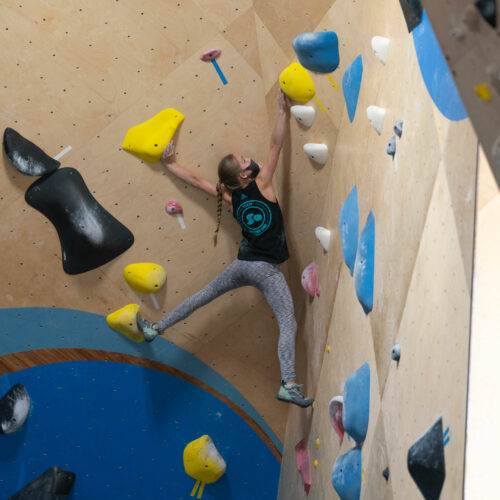
Hold Positivity
Perhaps the easiest way to directly affect the difficulty of a climb is to use less-positive holds. This strategy doesn’t necessary mean replacing jugs with the worst slopers or smallest crimps in your hold inventory; there are lots of degrees of positivity between those two extremes. A hold can be less positive and harder to use if it’s less incut, larger radiused, or if it has more complicated and harder to read gripping surfaces or sweet spots. You can sometimes also experiment with requiring the climber to use two (or more) holds together to get the security needed for the move. Explore how introducing changes in these aspects affects the overall difficulty of your climb.
Play with subtle changes in hold positivity throughout the length of your climb. Perhaps the holds will gradually become shallower or flatten out as a climber progresses through the climb, increasing the challenge in a progressive way. Or maybe it makes more sense to give a climber fairly positive holds and to then hit them with a similar looking hold that is drastically less positive, making the crux of your climb more pronounced. This especially works well if the move to that hold is dynamic or long, thereby taking away the expected reward that the climber is used to receiving when executing these types of moves. Or maybe give the climber less-positive holds leading to a complex sequence that is hard to execute, but that provides the climber with a more positive target hold to give that reward. Both of these tactics are ways in which you can introduce mental stress into the movement challenges of your climb, upping the difficulty slightly as a side effect.
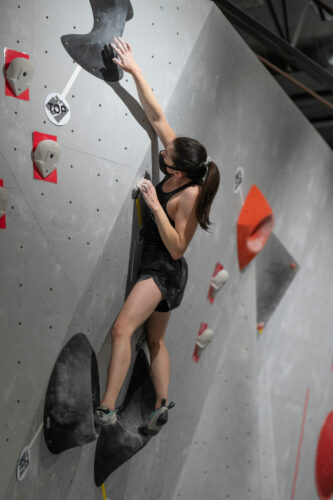
Blocking
Another common trend recently is to block holds. This can be done with either footholds or handholds, and is usually achieved in one of two ways. The first way is to stack a blocker hold directly over the usable portion of the intended hold. This stacking generally makes the hold less usable and positive, by blocking the deeper portion of the hold. The other usual method of blocking a hold is to space a blocker a short distance away from the usable portion of the hold. This often creates a type of slot feature, where more precision is required to grab or step on the hold. It will also often limit how much of your hand, foot or fingers can gain purchase on the intended hold.
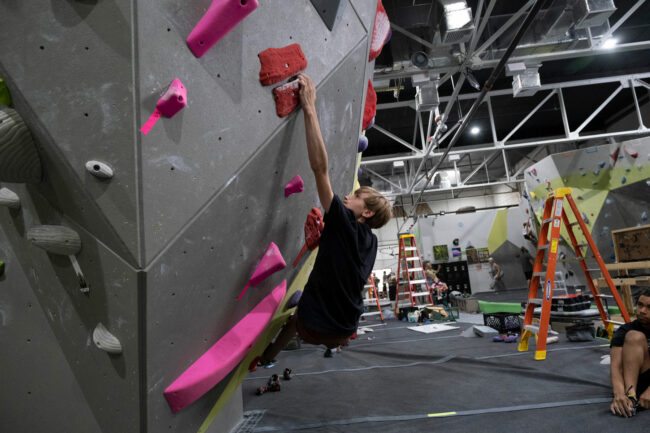
Dynamic Complexity
Some will argue that this style isn’t “real” climbing, but we are all now familiar with the more complex and “parkour” approaches to dynamic climbing that we’ve seen in climbing competitions recently. When you first start setting this type of movement, it can be challenging to achieve the desired outcome, but I would suggest partnering with another setter who does this well and adding it to your setting repertoire. At its core, setting more dynamic moves is just a tweak on the normal concept of opposition. Instead of applying a more static and consistent support for a move or use of a particular hold, this style of setting allows certain holds and movements to temporarily support and redirect the climber’s momentum and movement through the holds and sequence.
Once you start playing with the concepts, you will find that there are underlying patterns and formulas to making it all work. Especially if you work in an older or more traditional facility, introducing this type of movement and proposition to the gym’s clientele is a great way to not only provide an alternate type of difficulty offering, but to also allow the facility’s climbers to progress in their understanding of climbing movement. Common types of this movement can include paddle dynos, multiple target holds, presses, swinging toe or heel hook catches, run across sequences, etc.
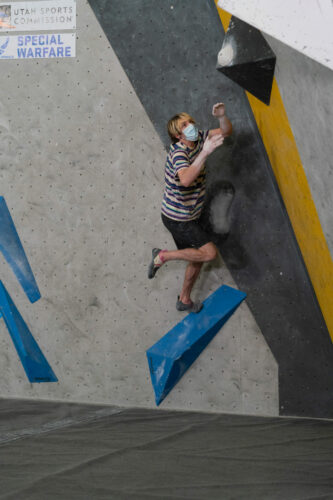
Momentum Generation
Providing comfortable and stable body positions from which to initiate a movement is common in lower levels of climbing. Conversely, taking away that stable and comfortable box for the climber’s body to operate in is a good way to build subtle difficulty into your sequence or climb. Forcing the climber to find the correct way to gain that missing oppositional support and generate momentum for a move can often be enough on its own to gain the difficulty you’re looking for in a climb. Sometimes this can be described as a climb being “funky,” but it usually is more about taking away a climber’s stability, or not providing the driving hand or foothold positioning that they would normally expect and rely on to start a movement.
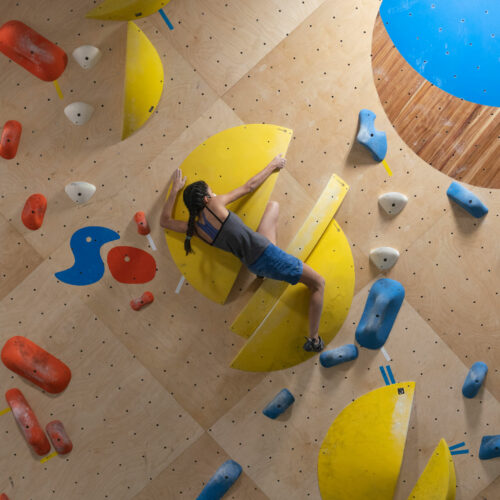
Hard to Use/Control Finishing Holds
There is another trend in both competition and commercial setting to require a match on a finish hold (or set of holds) to successfully complete a climb. Making this hold hard to match, or requiring a unique body or balance position to unweight one of the hands to allow for the match, is a great way to introduce a final difficulty challenge into your climb. This does not always mean using a bad sloper or less-positive hold as the final hold. Difficult matches can also be achieved by having to press over or up into a more positive and higher profile hold to get the stability to match.
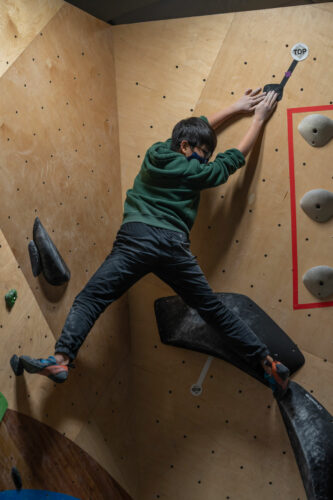
In a nutshell, harder climbing is generally more challenging, less stable, more cryptic, and requires a greater arsenal of movement awareness to succeed on than easier climbing. The more you can introduce unique and different ways of making your climbs challenging and difficult, the more your setting will be appreciated by more climbers. Anyone can grab “bad” holds and place them far apart to achieve difficulty. To some degree, that trick can still be worth trying from time to time, but overall it’s an outdated trend.
As we continue to understand body mechanics and climbing movement better, the setting industry needs to do better. We are the ones teaching indoor climbers how to progress and become better climbers overall. We should be proposing sequences and moves that make our climbers scratch their heads from time to time, before they decipher our sequences and expand their own skill sets. Show them what you’re capable of and allow them to also realize what they’re capable of as a result.

Louie Anderson has been climbing since 1974 and routesetting for over 35 years. He’s a big proponent for education in the setting world, having written The Art of Coursesetting (re-released as Fundamentals of Routesetting). Anderson has also been shaping holds and consulting for gyms for decades. His holds are available at Legacy Ascension, and more information about his services is at louieandersonclimbing.com.
Listen to our podcast with Louie: Revitalizing Routesetting for the Next Generation




